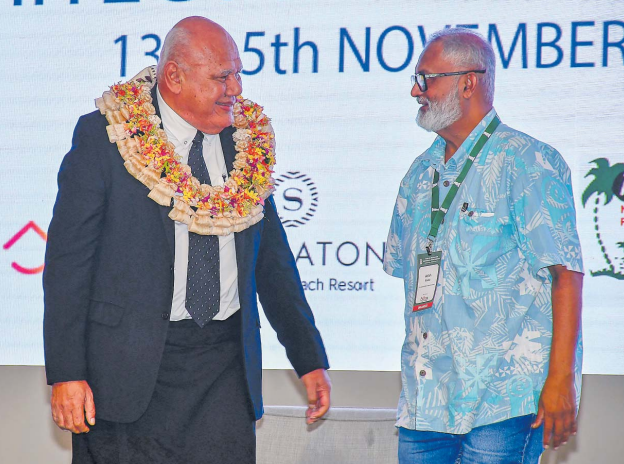MEMBER of Parliament Manoa Kamikamica said there were tremendous opportunities for growth and partnership within the architecture sector at the opening of the EXTRA Architecture Conference and Trade Exhibition on Thursday.
Mr Kamikamica highlighted the significant financial figures attached to the sector.
”AFL (Airports Fiji Ltd) is talking about a $2billion pipeline, road, and infrastructure; it’s easily a couple of billion. In total, perhaps we are probably not far off $12b in terms of total potential investment in Fiji,” he said.
Mr Kamikamica highlighted the expected job creation resulting from this investment.
”The prospects are exciting, I can see a lot of busy architects and engineers in the years to come and of course, that means at the end of it, more jobs, more employment for our people.
“This is why such a forum as this is so important. They foster dialogue, innovation and professional excellence.”
Mr Kamikamica stressed the importance of the sector’s contribution to national development.
”They remind us that every structure and every design and every innovation contributes to a bigger vision, a stronger, smarter and more sustainable Fiji.”
Sector must drive Fiji’s tourism vision
THE architecture and construction sector occupy a central role in national development through the Ministry for Tourism and Civil Aviation, says Acting Prime Minister and Minister for Tourism and Civil Aviation Viliame Gavoka.
While addressing delegates at the EXTRA Fiji Architectural Conference and Trade Exhibition in Nadi yesterday, Mr Gavoka said the government looked beyond simply welcoming visitors and maintaining air services.
“We seek to integrate transport, tourism, accommodation, and the built environment into a coherent, sustainable whole. Investments in airports, hotels, and conference venues must reflect the highest
standards of safety, sustainability, and design integrity,” he said.
Mr Gavoka said the Ministry’s Fiji National Sustainable Tourism Framework (NSTF) was a tenyear roadmap (2024–2034) designed to transform our tourism sector into one that is sustainable, inclusive, and resilient.
The NSTF centred on four high level goals, namely a prosperous visitor economy accomplished by creating enabling environments for investment and competitiveness, thriving and inclusive communities by embedding empowerment, social inclusion, and local entrepreneurship, visible and valued cultures through the safeguarding and promoting of diverse cultural heritage and healthy islands and oceans by ensuring environmental protection, climate resilience, and a low-carbon tourism sector.
“These goals resonate deeply with architecture and construction. Building resilient structures, using eco-friendly materials, integrating renewable energy, and respecting local context contribute directly to these priorities.
“Your work translates policy into reality — into schools that withstand storms, resorts that harmonise with nature, and communities that prosper.



